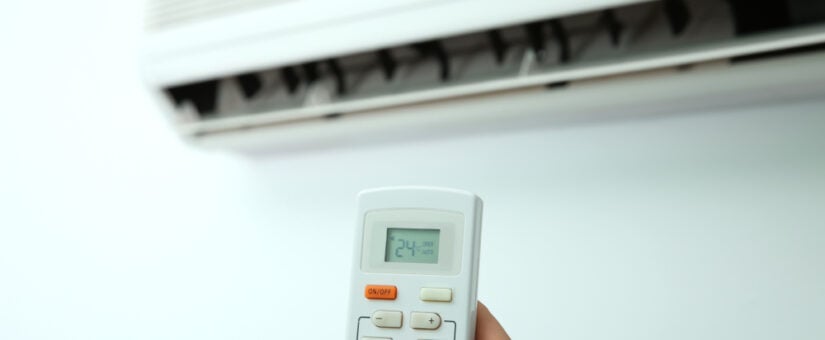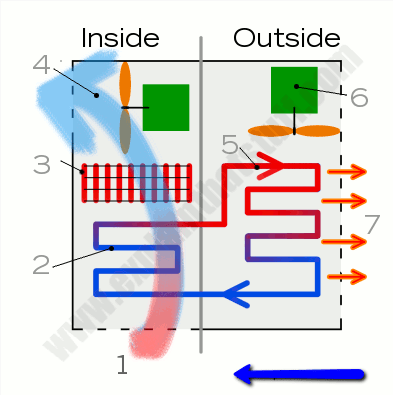
- On March 18, 2023
Updated August 20, 2024
You know your air conditioning system keeps your home or business cool in the hot summer months, but have you ever wondered how it works? One interesting fact you might not know is that your air conditioner and your refrigerator work primarily the same way. The difference is your refrigerator cools a small, insulated space, and an air conditioner keeps your home, office, or commercial space at a comfortable temperature.
The Process of Cooling Your Home with an A/C
Air conditioners are one part of a central heating and central cooling system that draws heat energy from outside of the home and transfers it.
Simply put, the air conditioner in both a house and business is a central heating and cooling system that provides cool air through the sheet metal ductwork by providing via a process that draws out the warm air inside, removing its heat, which is replaced by the cooler air.
The entire process of making the air in your property a comfortable temperature is based on a very simple scientific principle, and the rest is achieved by mechanical means. Let’s take a visual look at how air conditioning works to cool your home.
How an Air Conditioning Unit Works:
Your air conditioning unit uses chemicals that convert from gas to liquid and back again quickly. These chemicals transfer the heat from the air inside your property to the outside air.
Parts of an Air Conditioner
The AC unit has three key parts. These are the compressor, the condenser, and the evaporator. Your unit’s compressor and condenser are typically located in the outside part of the air conditioning system. Inside the house is where you will find the evaporator.
The cooling fluid reaches the compressor as a low-pressure gas. The compressor squeezes this gas/fluid, and the molecules in the liquid are packed closer together. The closer the compressor forces these molecules together, the higher the temperature and energy rise.
How Your Air Conditioner Removes Hot Air & Blows Cold Air
This working fluid exits the compressor as a high-pressure, hot gas, and it moves to the condenser. The outside unit of an air conditioning system has metal fins all around the housing. These fins work like the radiator on a vehicle, and they help dissipate heat more quickly.
When the fluid leaves the condenser, it is much cooler. It’s also changed from a gas to liquid because of the high pressure. The fluid makes its way into the evaporator through a minuscule, narrow hole and when the liquid reaches the other side of this passage, its pressure drops. When this happens, the fluid begins to evaporate to gas.
The Removal of Hot Air
As this occurs, the heat is extracted from the surrounding air. This heat is required to separate the molecules of the liquid into a gas. The metal fins on the evaporator also help exchange thermal energy with the surrounding air.
When the refrigerant leaves the evaporator, it is once again a low-pressure, chilled gas. The process starts all over when it goes back to the compressor. There is a fan that’s connected to the evaporator, and it circulates air around the inside of the property and across the fins of the evaporator.
The air conditioner sucks air into the ducts through a vent. This air is used to cool gas in the evaporator, and as the heat is removed from the air, it’s cooled. Ducts then blow air back into the house.
How Air Conditioners Maintain Consistent Cooling
This process continues until the inside air of your home or business reaches the desired temperature. When the thermostat senses that the interior temperature is at the desired level, it shuts the air conditioner off. When the room heats up again, the thermostat turns the air conditioner back on until the preferred ambient temperature is achieved again.
Trust in Howard Air & Plumbing for All of Your Phoenix Area A/C Needs
The great news is that you don’t have to know how an air conditioning system works to enjoy its effects! At Howard Air & Plumbing, we can help you if your system is going out, you want to upgrade to a new air conditioner, or if you’ve got any questions. We understand air conditioning, and we are here to provide our valued customers with exceptional service, quality repairs, and professional installations. Click here to email us or call (623) 201-5153 to speak with a representative immediately.
















0 Comments